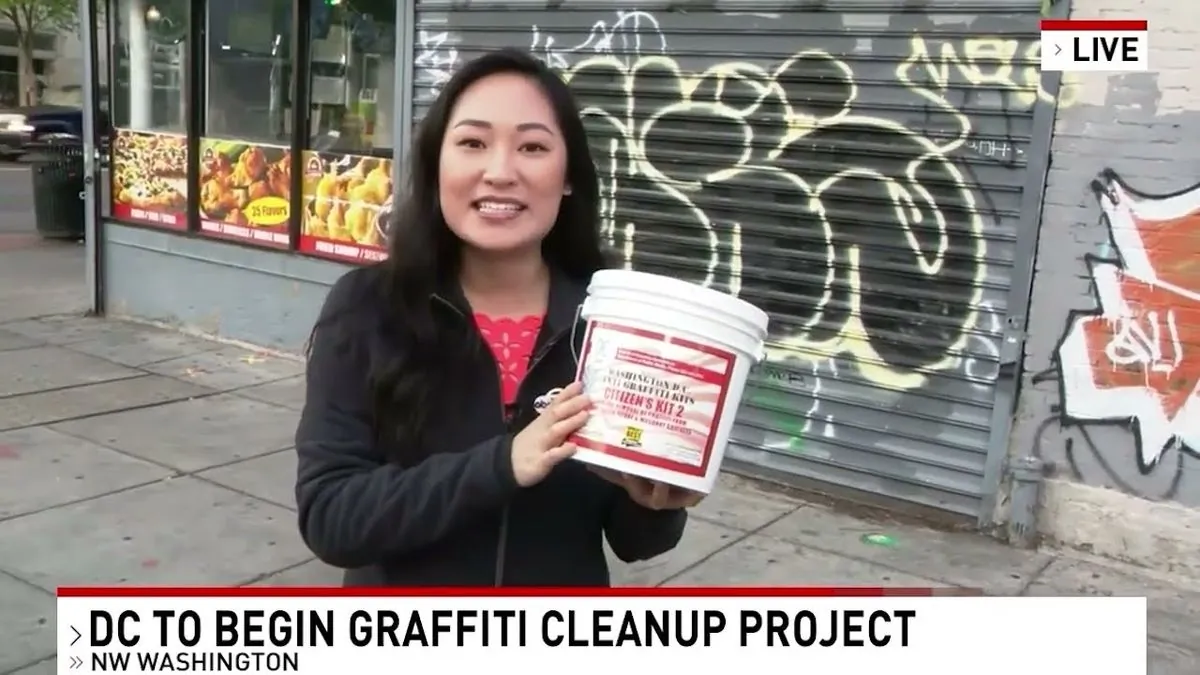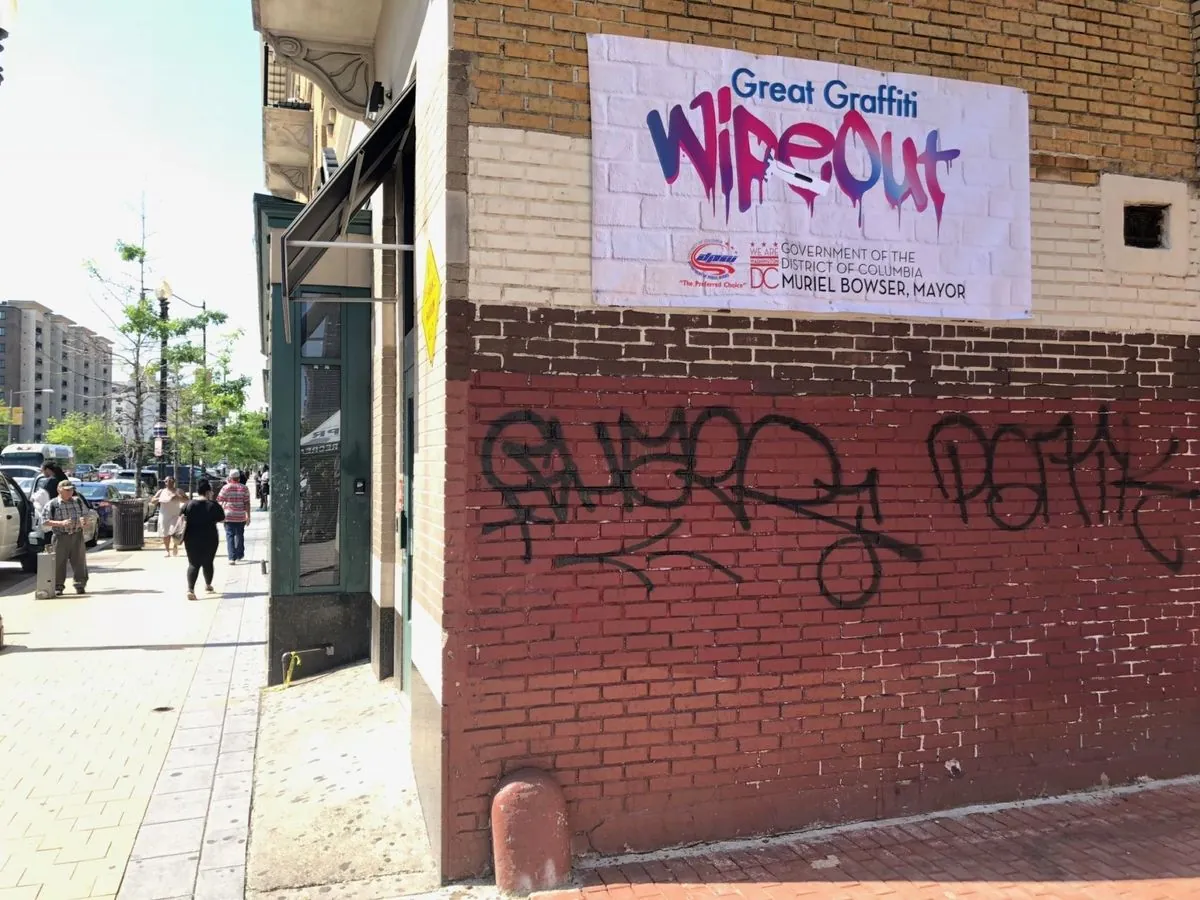D.C.'s Graffiti Dilemma: Art vs. Vandalism in the Nation's Capital
Washington D.C. grapples with the dual nature of graffiti as both art and vandalism. City crews work tirelessly to remove tags, while artists seek recognition for their craft in this ongoing urban struggle.

In the heart of Washington D.C., a daily battle unfolds between graffiti artists and removal crews, highlighting the complex relationship between urban art and vandalism. This struggle, deeply rooted in the city's cultural landscape, reflects a broader debate about the nature of public expression and urban aesthetics.
Aceba Broadus, a veteran of the District of Columbia's Department of Public Works (DPW), leads a small team in their daily graffiti removal efforts. Starting before 8 a.m., they tackle the city's persistent graffiti hotspots, using specialized chemicals and high-pressure water to erase the marks left by nocturnal artists. Despite their diligence, Broadus acknowledges the cyclical nature of their work, expecting new tags to appear within days.

Across town, Eric B. Ricks, a former graffiti artist turned muralist, offers a different perspective on urban art. Ricks, now working on a city-sponsored mural, views graffiti as a multifaceted form of expression with deep historical roots. He draws parallels between modern graffiti and ancient cave paintings, emphasizing the human urge to leave a mark on the world.
The city allocates $550,000 annually for graffiti removal, employing three DPW teams to combat the persistent issue. These crews use various methods depending on the surface and type of paint, from simple gray paint cover-ups to specialized chemical treatments and occasional sandblasting.
"Graffiti in its purest form is like a flower growing out of filth and muck."
Washington D.C.'s unique status as the nation's capital adds another layer to the graffiti debate. Political protests often leave their mark on the city's landmarks, as seen during the July 2023 demonstration against the Israel-Gaza war. Such incidents highlight the use of graffiti as a form of protest, a tradition that dates back to the Berlin Wall during the Cold War.
The city's approach to graffiti is not solely focused on removal. The Murals D.C. program, which has sponsored 165 murals around the city, offers a sanctioned outlet for street artists. This initiative pays artists like Ricks between $30 and $40 per square foot, recognizing the value of urban art when channeled through official means.
Graffiti's evolution from vandalism to recognized art form is evident in its growing acceptance in mainstream culture. Some graffiti artists have transitioned to successful careers in graphic design, while others have seen their works featured in major art exhibitions, including at the Museum of Modern Art.
The debate surrounding graffiti in D.C. reflects a global trend. Cities worldwide grapple with the dual nature of street art, with some embracing it as a tourist attraction while others continue to view it primarily as vandalism. The graffiti removal industry has grown into a multi-billion dollar global enterprise, underscoring the ongoing tension between artistic expression and urban cleanliness.
As Washington D.C. continues to navigate this complex issue, the city's approach serves as a microcosm of the broader societal debate on the value and place of street art in urban environments. The ongoing dialogue between artists, city officials, and residents shapes the visual landscape of the nation's capital, reflecting the ever-evolving nature of public space and expression.


































